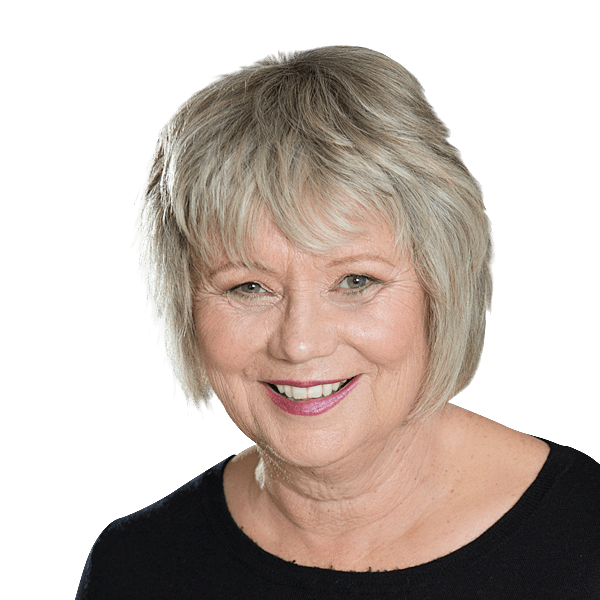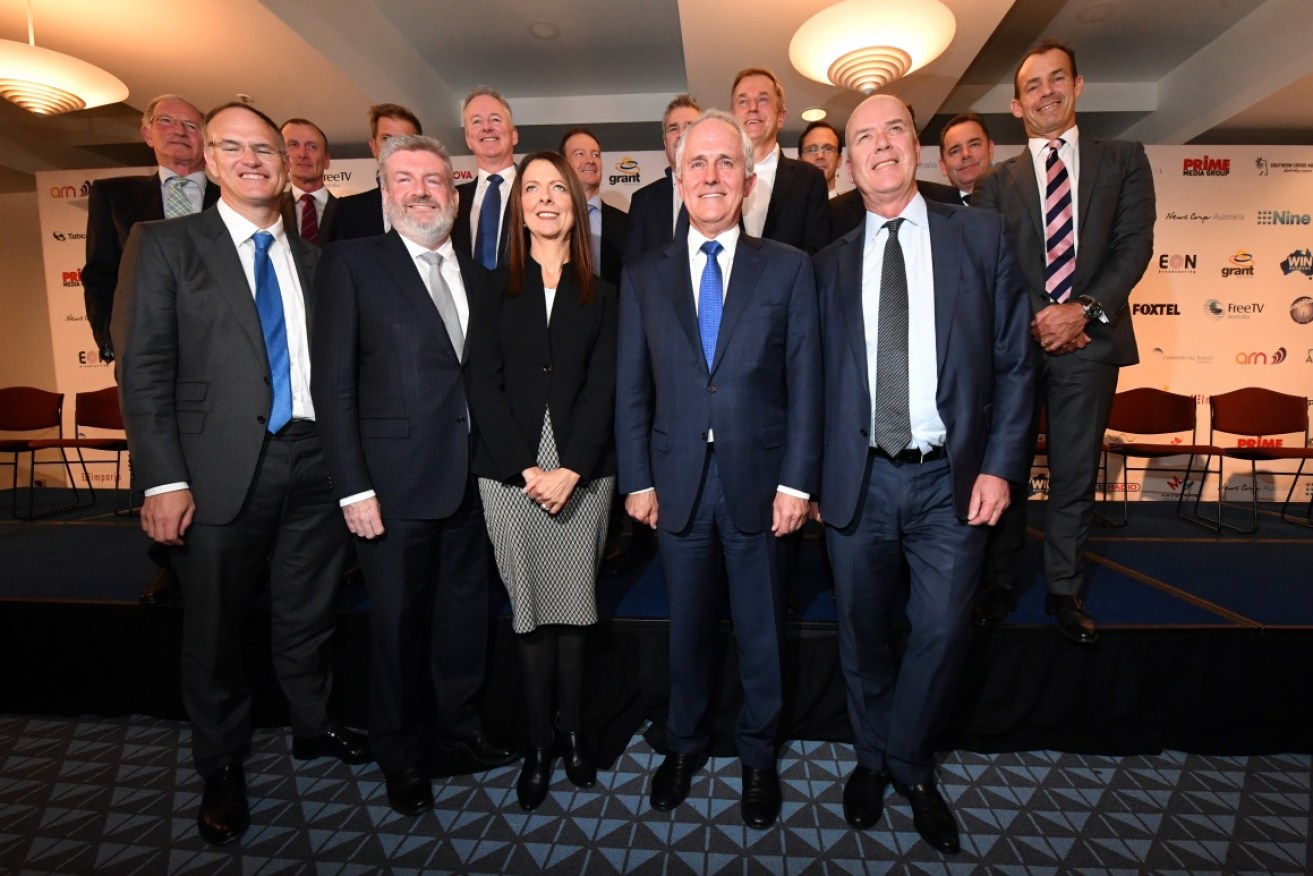White, male and wrinkly: one photo diagnoses what’s ailing our TV industry


A sole woman is the only thing breaking the worrying monotony of this photo. Photo: AAP
Any lingering doubt that Australian commercial media is a boys’ club was firmly booted into touch this week in Canberra.
Just have a gander at the photos from an event hosted by federal Communications Minister Mitch Fifield, where all of this country’s top media players gathered in support of the government’s media reforms.
Look at that group of fine, upstanding men. Immaculately dressed in their suits and, mostly, ties – standing proud with Prime Minister Malcolm Turnbull.
Most of them paid a million dollars-plus a year – and some, like Seven’s CEO, Tim Worner (partially obscured in this photo), considerably more.
Oops, there’s one woman in there, nearly missed her. She’s Cathy O’Connor, CEO of the innovative Nova Entertainment Group.
It’s worse than a mere boys club. The lack of women is bad enough, but where are the people under 50? What about people who aren’t white?
We’ve effectively got a white bread group of men of a certain age (albeit with distinguished careers) who are, apparently, destroying the joint (to paraphrase Alan Jones).
Of course commercial television remains the major player in the media market. But Roy Morgan Research last year showed one in seven Australians no longer watch commercial TV on any normal weekday.
That’s more than twice as many than in 2008. It’s happening in every age group, not just with younger viewers – and largely because of the arrival of services such as Netflix.
People are still watching a huge amount of content – just not on their television sets at times that suit television executives and their advertisers.
Where are the people with the knowledge that comes from consuming media in this hugely different world, so different to when most of these people were growing up?
Bruce Gyngell was only in his 20s when Sir Frank Packer recruited him to help set up Channel 9 in the 1950s.
Presumably his youth was an advantage at the time. Surely that same youthfulness would be of use now in a rapidly changing media marketplace.
"This is an area that should easily be above the partisan fray." – Communications Minister Mitch Fifield #supportausmedia pic.twitter.com/7H72qMkBbW
— WIN News Canberra (@WINNews_ACT) May 31, 2017
And how on earth can such a mono-cultured group claim to know the contemporary Australian market they’re trying to exploit? The closest they get to multiculturalism is a couple of New Zealanders (sarcasm intended).
It’s their view of the world, which is most likely to be reflected in their own hiring of the underlings who decide what programming is commissioned and how it’s delivered.
A look at the management teams listed on the three commercial TV networks websites is evidence of this. Together, they list 24 executives, just four of whom are women. Most are of a similar age, and few of the biographies indicate a multi-cultural background.
It’s not as if their collective balance sheets indicate they are doing a particularly great job embracing change and different opportunities.
In fact, that’s the whole reason they were all in Canberra this week – because the government’s proposed measures are hoping to boost the sustainability of their businesses.
Perhaps looking outside the conventional boys club and finding people with different perspectives and revolutionary ideas might also help with that.








